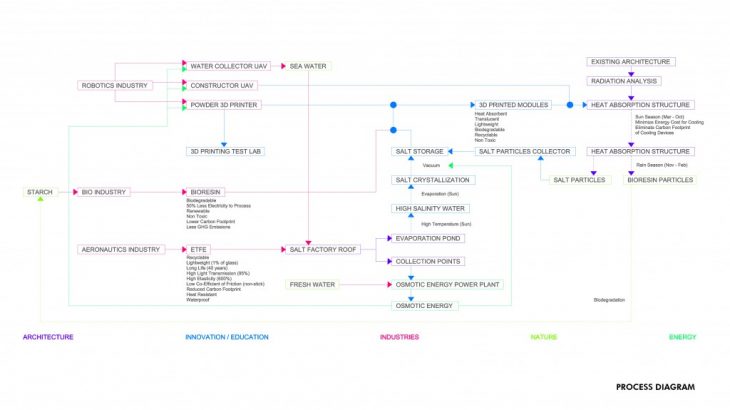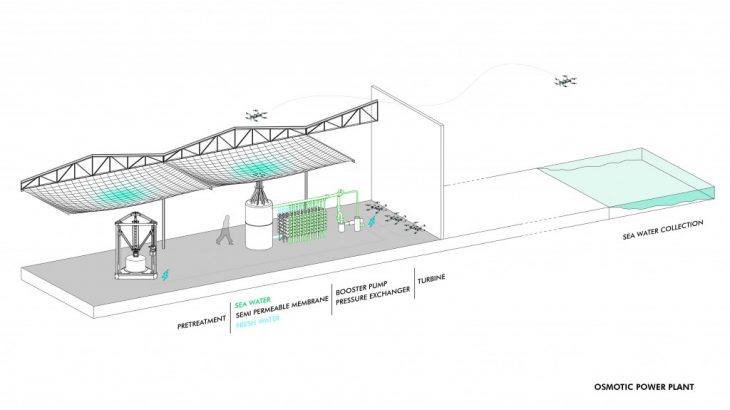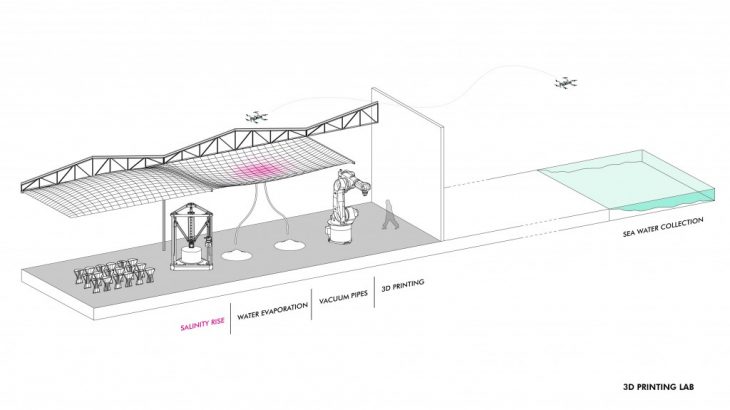SALINITY+
Salinity + deals with the use of sea water as in input for architectural design. This intervention is part of the retrofitting project that was proposed forthe new campus site in Barcelona. Why retrofit? The construction industry is the number one cause of man-made greenhouse emissions. Retrofitting an outdated building prevents the impact on the environment which would otherwise be produced be demolition, manufacturing, transportation and on-site operations. Salinity + revitalizes an old warehouse turning it into a salt 3D printing test lab. The sea water, dropped in the test lab’s ETFE roof ponds by drones, is used as an input for two different functions of the building. Firstly, it produces blue energy, after going through an osmotic power plant. The osmotic energy is used to recharge the drones and provides the energy for the 3d printers and the building itself. Secondly, it is mixed with bioresin, made out of starch, and used as a 3D printing material. The final products are semi transparent, heat absorptive modules used to retrofit the façade of a residential building on site that has high solar radiation levels. The modules protect from the high temperatures during the summer, and when the rain season begins they dissolve, and the salt is collected and reused.




IAAC - Institute for Advanced Architecture MAA01 - Master in Advanced Architecture 2017-2018 Research Studio - Self Sufficient Buildings Senior Faculty - Enric Ruiz Geli, Mireia Luzarraga Student - Nikoleta Mougkasi